29 Flavorful Traditional South American Fish Dishes
South American fish dishes represent a vibrant culinary landscape bursting with rich flavors and cultural heritage.
Regional coastlines offer incredible marine diversity that transforms simple ingredients into extraordinary meals.
Generations of coastal communities have perfected techniques passed down through family traditions.
Seafood preparation reflects complex interactions between indigenous cooking methods and imported influences.
Techniques range from delicate ceviche styles to robust stews that showcase intricate spice combinations.
Ingredients sourced directly from local waters create profound connections between people and their natural environment.
Fresh catches bring communities together, celebrating oceanic abundance with remarkable creativity and skill.
Hungry readers can anticipate an exciting journey through 29 delectable fish preparations that promise to tantalize taste buds:
Which Traditional South American Fish Dishes Should You Try?
South American kitchens bring together river and sea to create fish dishes rich with heritage and bold flavors. Discover everything from spicy ceviches to rustic stews, perfect for family and friends.
Ceviche
Ceviche are tangy lime-marinated seafood dishes originating from Peru that chemically "cook" raw fish through acidic citrus juices.
Peruvian fishermen and coastal communities pioneered this delicate preparation method centuries ago, transforming fresh ocean catches into zesty culinary experiences.
Leche de tigre (tiger's milk), the potent marinade, turns raw fish from pink to white while infusing intense flavor through lime juice, salt, onions, and chili peppers.
Freshness determines ceviche's quality, with top-tier versions using fish caught mere hours before preparation.
Professional seafood preparation requires strict attention to ingredient selection to prevent potential food-borne illnesses.
Coastal regions across South America have embraced this technique, creating regional variations with unique ingredients.
Each serving typically includes complementary garnishes like sweet potato or corn.
Traditional preparation demands precise timing and expert ingredient balance to achieve perfect texture and taste.
Baked Corvina Sea Bass (Corvina Al Horno)
Corvina al horno represents a succulent Latin American seafood specialty featuring sea bass baked with aromatic vegetables and bright Mediterranean-inspired seasonings.
Chileans and Peruvians cherish this simple yet elegant dish prepared with fresh corvina sea bass, ripe tomatoes, and sweet onions.
Mediterranean influences shine through the recipe's white wine and lemon juice marinade that tenderizes and enhances the fish's natural flavors.
Olive oil creates a silky base for the vegetables, which roast briefly before receiving the seasoned fish.
Salt and fresh parsley add critical seasoning that complements the fish's delicate texture.
Garlic provides depth and complexity to the overall flavor profile.
Restaurants and families across Chile and Peru serve this seafood dish as a light, nutritious main course showcasing regional maritime ingredients.
Anticuchos De Pescado
Anticuchos de pescado are sizzling Peruvian seafood skewers marinated in a bold blend of garlic, paprika, and zesty spices.
Grilled to perfection, these fish cubes deliver a smoky, intense flavor characteristic of traditional Andean street food.
Local markets and coastal regions in Peru feature this popular dish as a quick, satisfying meal.
Chefs typically use firm white fish like sea bass or halibut for the best texture and taste.
Skewered and quickly charred over hot coals, the fish develops a crispy exterior while remaining tender inside.
Boiled potatoes, fresh lettuce, corn, and spicy aji amarillo sauce complement the grilled fish.
Lemon wedges add a bright, citrusy finish to the dish.
Peruvian food lovers consider anticuchos de pescado a beloved street food staple.
Tiradito
Tiradito represents a Peruvian seafood delicacy of raw fish sliced paper-thin and instantly dressed with zesty lime juice, distinguishing itself from ceviche by maintaining the fish's raw state.
Japanese immigrants to Peru originally introduced this technique, blending traditional Japanese sashimi preparation with local South American ingredients.
Skilled chefs carefully select the freshest ocean fish, using razor-sharp knives to create delicate, translucent slices.
Vibrant garnishes like coriander, sliced onions, and occasionally pickled jalapeños enhance the dish's flavor profile.
Each slice must be supremely fresh and served ice-cold to preserve its delicate texture.
Lime juice adds a bright, tangy accent that complements the fish's natural taste.
Presentation matters as much as taste, with chefs treating each slice as a miniature work of culinary art.
Encebollado
Encebollado is Ecuador's legendary hangover cure and national seafood soup packed with fresh tuna, cassava, and an abundance of onions.
Fishermen along Ecuador's coastal regions originally crafted this hearty meal from available ingredients like fresh fish, spices, and vegetables while working at sea.
Maritime traditions inspired its creation, using a robust sofrito base of tomatoes, chili, coriander, and cumin to build deep flavor profiles.
Pickled onions give the dish its distinctive name and tangy character, transforming a simple fisherman's meal into a beloved national staple.
Tuna provides rich protein while cassava root adds substantial texture and heartiness to the soup.
Coriander and various spices contribute complex layers of seasoning that make each bowl unique.
Ecuadorians consume encebollado throughout the day, particularly as a morning remedy for post-celebration recovery.
Street vendors and home kitchens alike celebrate this traditional soup as a fundamental part of coastal culinary heritage.
Caldillo De Congrio
Caldillo de congrio is a classic Chilean seafood soup starring succulent conger eel as its star ingredient.
Fishermen along Chile's coastline have perfected this rich broth by simmering fresh eel with aromatic vegetables like onions, garlic, tomatoes, carrots, and bell peppers.
Coastal communities traditionally prepare the soup by boiling chopped eel to create a deep, savory base that captures ocean flavors.
Salt and black pepper provide fundamental seasoning, while fresh herbs like coriander, parsley, or scallions add bright finishing notes.
Chileans typically serve caldillo de congrio with crusty bread and a complementary glass of wine.
Chilean literature even immortalized this dish, with famous poet Pablo Neruda praising its comforting qualities in his writing.
Patarashca
Patarashca are succulent grilled fish parcels from Peru's Amazon region that showcase indigenous cooking techniques using fresh river fish wrapped in aromatic bijao leaves.
Jungle communities carefully clean and season whole fish with sacha culantro, onions, garlic, hot peppers, and cumin before stuffing and sealing them inside green leaves.
Bijao leaves impart a distinctive herbal fragrance while protecting the delicate fish during grilling.
Traditional preparation involves cooking the fish over open flames until perfectly tender and infused with smoky flavors.
Regional fishermen often catch the protein-rich freshwater fish themselves, ensuring maximum freshness.
Hot chili peppers add a spicy kick to the mild fish meat.
Roasted plantains or boiled cassava typically accompany the dish as complementary side dishes.
Simple ingredients and expert grilling techniques make patarashca a beloved Amazonian culinary treasure.
Tambaqui Na Brasa
Tambaqui na brasa represents an iconic Amazonian grilled fish specialty featuring a whole tambaqui fish marinated with olive oil, herbs, garlic, and lime before being expertly charred over open flames.
Regional Brazilian cuisine celebrates this dish as a flavorful protein highlighting fresh Amazonian river fish with intense smoky grilling techniques.
Olive oil and salt create a simple seasoning base that enhances natural fish flavors.
Herbs and garlic add aromatic depth to the marinade.
Lime slices contribute bright citrus notes during cooking.
Side dishes typically include white rice, beans, and tucupi sauce.
Regional cooks traditionally serve the fish whole with lemon wedges.
Grilling transforms the tambaqui into a succulent main course that captures Brazilian culinary traditions.
Dorada A La Parrilla
Dorada a la parrilla highlights Argentina's expert grilling techniques with fresh dorado fish prepared on a traditional parrilla.
Sea-caught dorado transforms into a succulent meal when carefully grilled over hot coals with minimal seasoning.
Herbs like parsley and thyme enhance the fish's natural maritime flavors without overwhelming its delicate texture.
White wine and olive oil create a light marinade that penetrates the fish's flesh before cooking.
Salt and ground black pepper provide simple yet critical seasoning for the dish.
Argentine chefs typically serve the grilled fish immediately after cooking to preserve its moisture and smoky char.
Coastal regions of Argentina especially appreciate this straightforward seafood preparation.
Grilling techniques passed through generations ensure each dorada serves as a perfect representation of South American barbecue traditions.
Boga A La Parrilla
Boga a la parrilla represents an iconic Argentine grilled fish specialty featuring freshwater boga fish prepared with traditional barbecue techniques.
Argentine grill masters carefully open whole fish and season it generously with herbs, spices, lemon juice, and occasional white wine splashes.
Chimichurri mix often enhances the fish's natural flavors during grilling.
Cooks frequently complement the fish with classic Argentine sauces like salsa criolla or salsa provenzal.
Grilling occurs on both sides until the fish reaches perfect tenderness and develops a crispy exterior.
Fresh ingredients and precise grilling methods ensure maximum flavor absorption.
Boga's mild taste makes it an excellent canvas for regional seasonings.
Argentina's riverside regions contribute significantly to this dish's widespread popularity.
Chupe De Pescado
Chupe de pescado are hearty Ecuadorian seafood stews packed with diverse ingredients and rich coastal flavors.
Fishermen and home cooks craft this traditional soup using white fish like cod, dredged in flour and fried until golden brown.
Fresh vegetables including potatoes, carrots, squash, and corn simmer in a flavorful fish stock, creating a robust base.
Hot peppers and herbs such as mint and oregano infuse the broth with complex spiciness.
Evaporated milk adds creamy texture and depth to the soup's consistency.
Cracked eggs float on top, providing extra protein and visual appeal.
Queso fresco and toasted bread complete the dish, offering contrasting textures and additional richness.
Lent remains the most popular season for enjoying this comforting Ecuadorian meal.
Pacu A Las Brasas
Pacu a las brasas are succulent Argentine riverside fish specialties featuring freshwater pacu grilled directly on wood or charcoal embers.
Argentine fishermen carefully butterfly the fish and season it with regional herbs and spices before placing it carefully over intense flames.
Regional cooks select high-quality pacu from rivers like Paraná, preparing it with minimal seasoning to highlight its natural flavors.
Grilling transforms the fish's texture, creating crispy external edges while maintaining a tender inner flesh.
Fresh accompaniments like lettuce, tomato slices, potatoes, and fried onion rings enhance the dish's rustic charm.
Wood fire imparts a distinctive smoky essence that elevates the fish's natural taste.
Rural families traditionally enjoy pacu a las brasas during weekend gatherings and fishing celebrations.
Chinguirito
Chinguirito represents a traditional Peruvian seafood delicacy featuring cured guitarfish transformed into a zesty ceviche-style dish.
Fishermen in coastal regions carefully dry and preserve guitarfish meat through sun-drying techniques passed down through generations.
Lemon juice and chili peppers marinate the fish, creating a tangy and spicy flavor profile that highlights the seafood's natural richness.
Locals typically serve chinguirito with boiled yuca, crispy fried corn, and fresh chopped onions as complementary side ingredients.
Soft, thin fish slices absorb citrus and spice marinades, developing complex taste sensations.
Guitarfish meat selection requires expertise to ensure optimal texture and flavor.
Preparation demands precision in curing and seasoning techniques.
Peruvian coastal communities consider chinguirito a cherished regional specialty showcasing their maritime culinary traditions.
Trucha A La Parrilla
Trucha a la parrilla captures Peru's grilling mastery with fresh mountain trout expertly prepared over open flames.
Fishermen from Andean regions traditionally catch rainbow trout from cold, clear rivers and streams.
Zesty marinade of lemon juice, parsley, cumin, garlic, salt, and pepper infuses the fish with intense flavors before grilling.
Low-heat cooking on a parrilla ensures crispy exterior while maintaining tender, moist interior.
Mountain regions like Cusco and Puno frequently serve this dish as a protein-rich meal.
Simple ingredients and careful preparation highlight the trout's natural taste.
Marinating helps tenderize the fish and adds depth to its flavor profile.
Served immediately after grilling, trucha a la parrilla offers a pure, authentic Peruvian dining experience.
Caldo De Piranha
Caldo de piranha represents a bold Brazilian soup featuring fierce Pantanal river predator fish transformed into a robust broth bursting with regional flavors.
Brazilians extract maximum taste from small bony piranha by cleaning and boiling the fish to create a rich stock that captures the region's culinary spirit.
Mato Grosso do Sul chefs blend the piranha with fresh ingredients like onions, tomatoes, and annatto for depth and color.
Chili peppers and herbs including coriander, parsley, and spring onions add sharp complexity to the soup's profile.
Garlic, lime juice, and vinegar further enhance the broth's intensity and balance.
Vegetable additions such as bell peppers contribute extra texture and nutrition.
Fishermen and locals traditionally prepare this soup as a hearty meal after fishing expeditions.
Regional cooks carefully sieve the stock to remove bones, ensuring a smooth and flavorful experience for diners.
Tortilla De Raya
Tortilla de raya are savory Peruvian seafood omelets made from ray fish, featuring tender strips of ray expertly blended with fluffy eggs and aromatic garlic.
Ray fish provides a unique, mild flavor profile that distinguishes this coastal specialty from other seafood dishes.
Aji amarillo, Peru's signature yellow pepper, adds distinctive heat and depth to the omelet's taste.
Cooks carefully fry ray strips until golden and crisp before incorporating beaten eggs into the pan.
Traditional preparation involves cooking the mixture until eggs are perfectly set and edges are slightly crispy.
Rocoto chile sauce accompanies the dish, offering an extra layer of spicy complexity.
Peruvian coastal communities have long enjoyed this protein-rich meal as a breakfast or light lunch option.
Fishermen and home cooks alike prize tortilla de raya for its simplicity and bold marine flavors.
Timbuche
Timbuche is a hearty Peruvian fish soup brimming with Amazonian culinary traditions and simplicity.
Native Quechua communities created this rustic broth using freshwater fish from local rivers and minimal ingredients.
Fishermen traditionally prepare timbuche as a quick, nourishing meal after long days of fishing in Peru's Amazon basin.
River fish like paiche or tilapia form the protein base of this uncomplicated soup.
Garlic, herbs, and sometimes root vegetables enhance the soup's natural flavors.
Salt and local spices provide additional seasoning to the light, nutritious broth.
Timbuche represents an authentic taste of Peruvian riverine cuisine, reflecting the resourcefulness of Amazonian communities.
Hassar Curry
Hassar curry represents a unique Guyanese seafood delicacy featuring rare catfish simmered in a rich, spicy coconut milk sauce.
Fishermen catch the elusive hassar from Guyana's rivers, making this dish a regional treasure.
Local cooks carefully prepare the curry by sautéing onions and garlic in oil before adding curry powder and coconut milk.
Lime juice adds brightness to the sauce while hot peppers provide a subtle heat.
Potatoes and tomatoes complement the fish, creating a complex flavor profile.
Chefs simmer the hassar in the fragrant sauce until it thickens and becomes intensely flavorful.
Traditionally served hot, the curry showcases the delicate texture of the rare catfish.
Guyanese families enjoy this dish as a special meal that connects them to their culinary heritage.
Pescado A Lo Macho
Pescado a lo macho bursts with robust seafood flavors from Peru's northern coastal regions, featuring a lightly fried white fish fillet swimming in a complex, spicy sauce packed with diverse marine treasures.
Shrimp, squid, mussels, and octopus blend seamlessly with aji peppers, garlic, onions, and tomatoes to create an intensely aromatic seafood experience.
White wine or pisco often enhances the sauce's depth, providing an extra layer of complexity.
Sole or sea bass serve as the primary fish, chosen for their delicate texture and ability to absorb rich marinades.
Traditional preparation involves carefully frying the fish to maintain its tender interior while creating a slightly crisp exterior.
North Peruvian coastal communities pioneered this dish, transforming simple ingredients into a sophisticated meal.
Regional cooking techniques ensure each component maintains its distinct flavor while contributing to the overall harmony.
Flounder Ceviche (Ceviche De Lenguado)
Flounder ceviche marks Peru's seafood mastery, transforming raw flounder into a zesty marine delicacy through citrus-based chemical cooking.
Lime juice breaks down fish proteins, creating tender, translucent fish strips that absorb bold flavors from serrano or jalapeno peppers.
Peruvian coastal regions pioneered this dish, using ultra-fresh flounder caught directly from Pacific waters.
Thin white onion slices add sharp crunch and aromatic intensity to the preparation.
Olive oil provides smooth richness that balances acidic lime juice.
Garlic and white pepper contribute deep, warm undertones to the marinade.
Salt enhances every ingredient's natural essence.
Quick refrigeration ensures perfect texture and food safety for this classic seafood appetizer.
Sudado De Surubi
Sudado de surubi highlights Bolivia's riverside culinary traditions through a rich, aromatic fish stew from Pando department.
Native surubi fish becomes tender when slowly simmered with vegetables and white wine.
Fishermen traditionally prepare this dish using fresh local ingredients harvested near river banks.
Regional cooks carefully season surubi pieces with salt and pepper before lightly coating them in flour.
Each ingredient contributes complex layers of flavor, from caramelized onions to bright lemon juice.
Olive oil creates a silky base that binds vegetables and fish together.
White wine adds depth and complexity to the sauce.
Carrots, bell peppers, and garlic provide additional texture and robust taste.
Bacon And Fish Rolls
Bacon and fish rolls epitomize Guyana's coastal culinary creativity by wrapping succulent fish fillets in crispy bacon strips.
Seafood lovers savor these compact appetizers for their bold flavor combinations and simple preparation method.
Salt, pepper, and lemon juice enhance the meat's natural richness during baking.
Guyanese kitchens traditionally pair these rolls with a smooth egg-based sauce that complements their salty-tangy profile.
Compact and easy to prepare, these rolls showcase Caribbean seafood traditions.
Bacon provides a smoky exterior that seals in fish moisture during cooking.
Regional ingredients and straightforward techniques make these rolls a popular party or gathering snack.
Pepre Watra
Pepre watra is a bold Surinamese fish soup bursting with spicy, aromatic flavors from Madame Jeannette peppers.
White fish forms the protein base of this simple yet powerful traditional dish.
Fishermen and home cooks prepare the soup by combining fresh fish with chopped onions, tomatoes, and celery.
Bouillon cubes and black pepper enhance the soup's deep, complex taste profile.
Water serves as the primary cooking liquid, creating a light broth that allows ingredients to shine.
Salt seasons the mixture, balancing the peppers' intense heat.
Simmering allows fish to cook gently and flavors to meld together seamlessly.
Surinamese families enjoy pepre watra as a comforting meal that showcases local maritime ingredients.
Chupin De Pescado
Chupin de pescado is a beloved Argentine fish stew originating from Entre Rios that showcases regional culinary traditions through its rich seafood preparation.
Fishermen traditionally prepare this dish using local river fish like surubi or pati, carefully cutting them into tender fillets or cubes.
River-caught fish form the heart of the stew, simmered gently with a colorful medley of chopped vegetables including potatoes, tomatoes, peppers, carrots, and onions.
Crushed garlic adds depth to the broth, which gains complexity from added wine and aromatic herbs and spices.
Regional cooks enhance the stew's flavor by incorporating homemade fish stock, creating a robust and comforting meal.
Argentina's inland river communities have perfected this recipe over generations, making it a staple of their gastronomic heritage.
Families often serve chupin de pescado with crusty bread, allowing diners to soak up every flavorful drop of the fragrant broth.
Sudado De Pescado
Sudado de pescado is a hearty Peruvian seafood stew simmered in a robust tomato-based broth with aromatic spices and fresh white fish.
Colombian and Peruvian coastal regions popularized this dish as a nourishing meal highlighting ocean-fresh ingredients.
Garlic, onions, and peppers form the foundational flavor profile of this comforting stew.
Tomatoes create a rich, slightly tangy liquid that gently poaches the fish to perfect tenderness.
Traditionally served with rice or potatoes, sudado de pescado offers a complete and satisfying meal.
Family gatherings and seaside communities frequently enjoy this simple yet flavorful seafood preparation.
Maito De Pescado
Maito de pescado are traditional Ecuadorian banana leaf-wrapped river fish parcels originating from Pastaza's Indigenous communities.
Indigenous women select fresh catfish, tambaqui, or bocachico as primary protein sources for this rustic dish.
Banana leaf wrappings seal in natural fish flavors while protecting delicate meat during firewood cooking.
Natural fibers tightly bind each parcel, creating a unique steaming environment that enhances taste and texture.
Salt, onions, and garlic now complement traditional leaf-based seasonings, adding depth to the simple preparation.
Chagramamas farmers traditionally cultivate accompanying side dishes like cassava, plantains, and potatoes.
Regional cooking techniques transform basic ingredients into a memorable meal reflecting Ecuador's culinary heritage.
River fish wrapped in banana leaves represent an authentic connection to Indigenous cooking traditions.
Caldo De Carachama
Caldo de carachama are hearty Ecuadorian fish soups brimming with rich Amazonian flavors from carachama, a native freshwater river fish prized for its tender meat and distinctive taste.
Amazon river communities traditionally prepare this soup by carefully cleaning and boiling whole carachama fish until perfectly soft and succulent.
Regional cooks enhance the broth with local ingredients like yucca, plantains, and spicy aji peppers that complement the fish's natural flavor profile.
Garlic and fresh coriander provide additional depth and aromatic complexity to the soup.
Rice and lime wedges typically accompany the dish, adding texture and brightness to each serving.
Indigenous Amazonian cultures have enjoyed this nutritious soup for generations as a staple meal.
Fishermen often prepare caldo de carachama immediately after catching carachama, ensuring maximum freshness and flavor.
Small family restaurants and home kitchens throughout Ecuador's Amazon region continue to celebrate this traditional soup as a connection to their cultural heritage.
Pescado A La Chorrillana
Pescado a la chorrillana showcases Peru's coastal culinary mastery through a crispy golden fish fillet bathed in a spicy sauce of sautéed onions, tomatoes, and aji peppers.
Lima's iconic seafood dish features white-fleshed fish like corvina or sole expertly fried to achieve a crunchy exterior and succulent interior.
Chefs carefully season the fish before frying it to a perfect golden brown.
Garlic and regional spices intensify the sauce's complex flavor profile.
Onions and tomatoes form the sauce's hearty base.
Aji peppers add a distinctive Peruvian heat.
Diners enjoy this vibrant plate as a testament to Peru's rich seafood traditions.
Fried Ceviche (Ceviche Frito)
Ceviche frito transforms traditional Peruvian seafood preparation by frying marinated fish after its citrus bath.
Originating in Peru, this dish starts with fresh white fish soaked in a zesty lime juice mixture with chili peppers and onions.
Cooks carefully marinate the fish to infuse bold flavors before lightly coating and frying it to crispy perfection.
The frying process adds a crunchy exterior while maintaining the fish's tender interior.
Lime and chili notes remain prominent throughout the cooking method.
Seafood lovers appreciate this innovative twist on classic ceviche.
Are Freshwater Fish Dishes As Common As Saltwater Seafood In South America?
In South America, saltwater seafood generally dominates coastal cuisine due to extensive coastlines and rich marine biodiversity. Countries like Peru, Chile, and Brazil are famous for dishes featuring fish, shellfish, and crustaceans.
However, freshwater fish dishes are also significant, especially in inland and riverine areas such as the Amazon basin, the Paraná River, and the Pantanal wetlands. Species like tambaqui, pacu, and surubí are staples for many communities and featured in traditional dishes.
While saltwater seafood may be more widely known internationally, freshwater fish dishes hold important cultural and culinary roles within many South American regions.

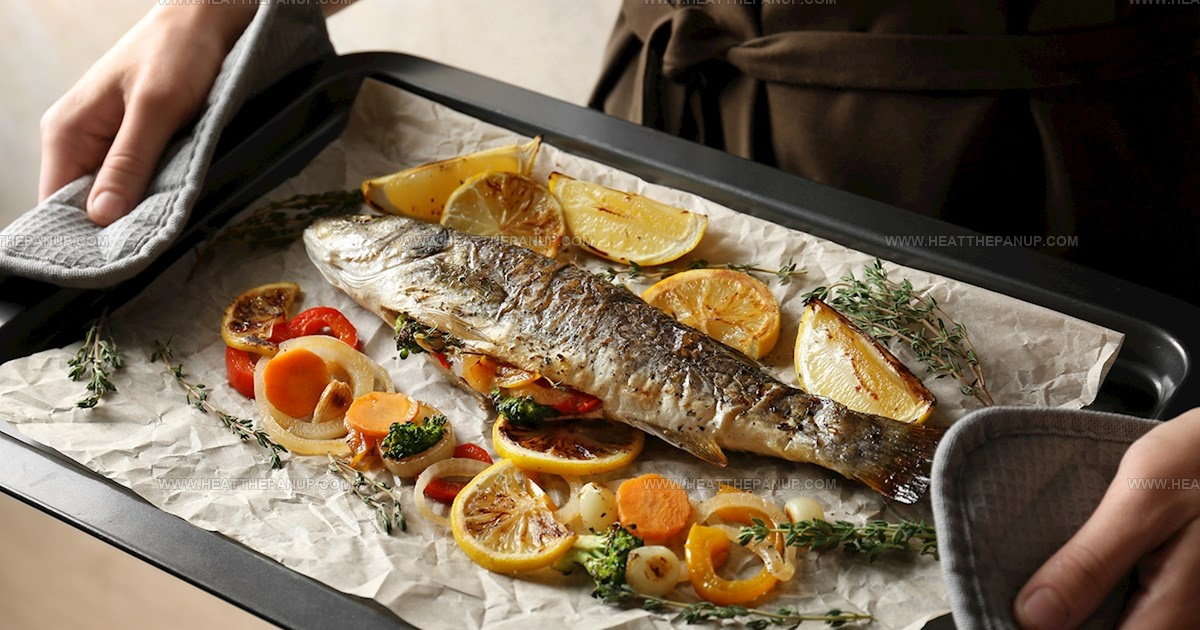
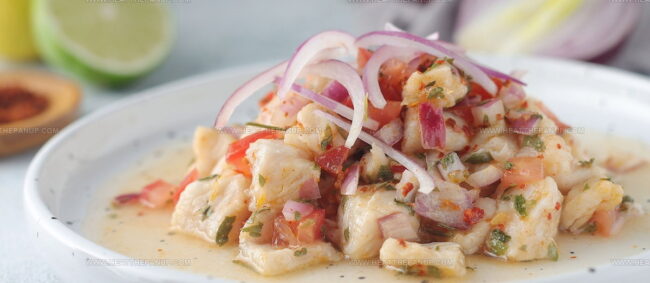
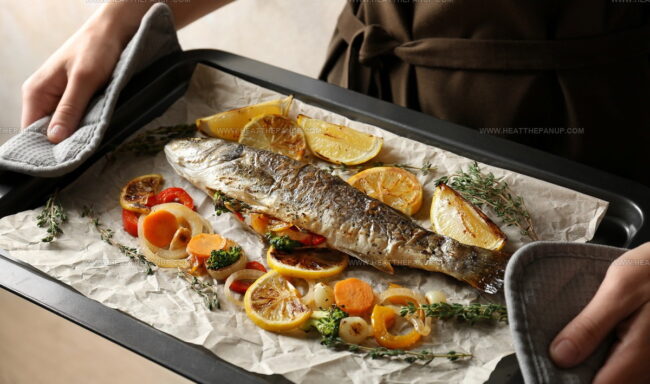
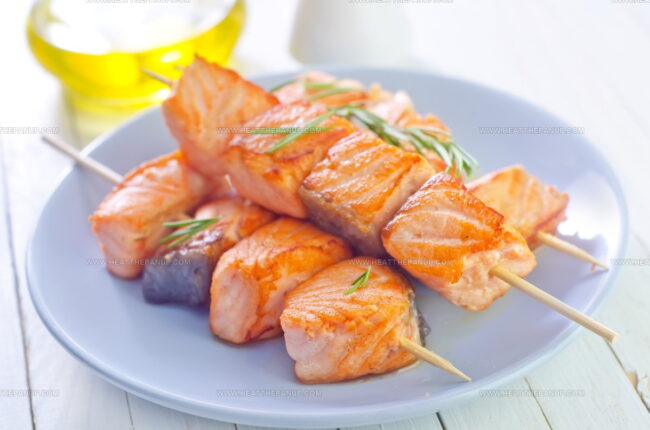
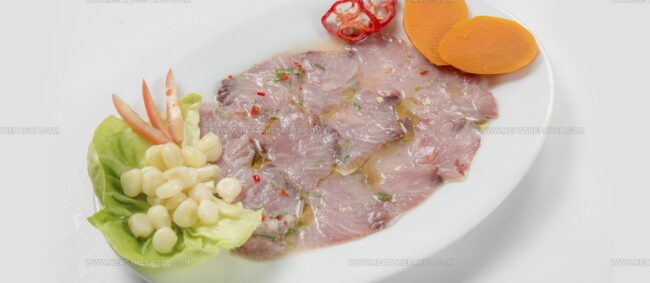
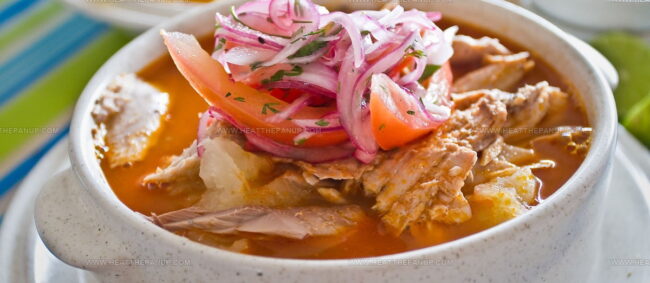
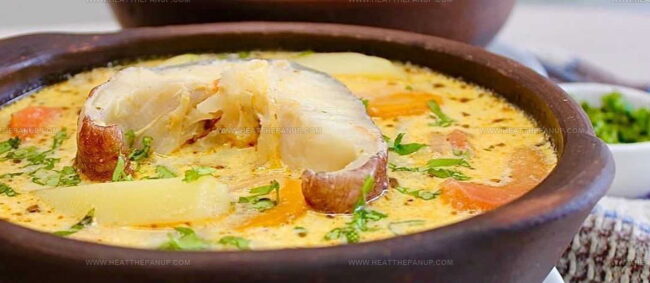
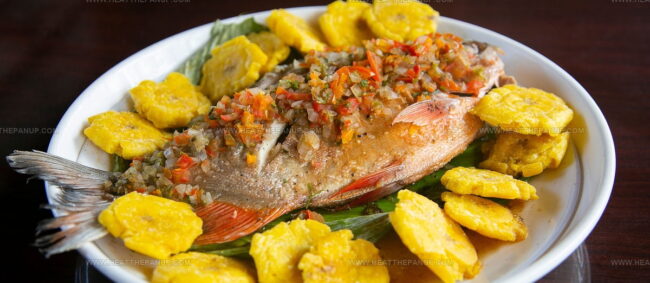
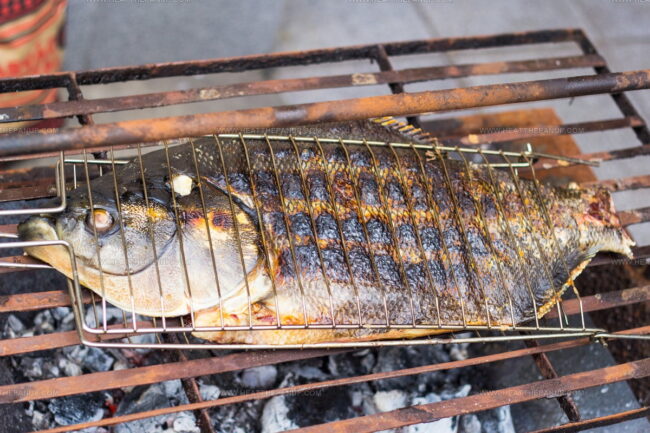
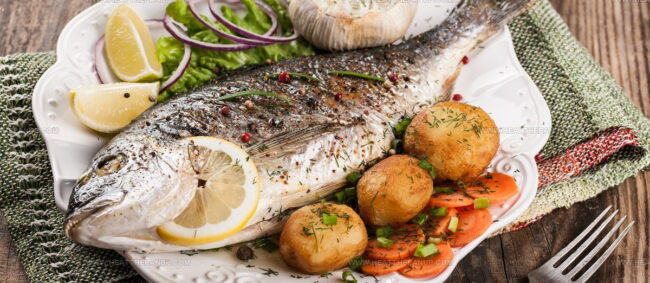
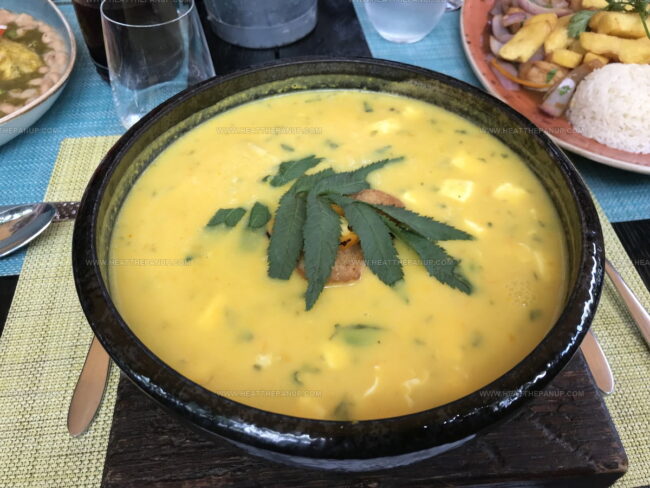
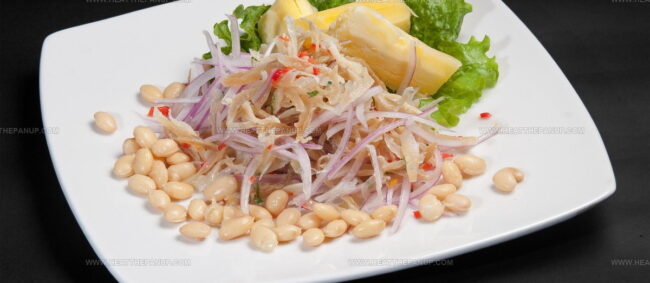
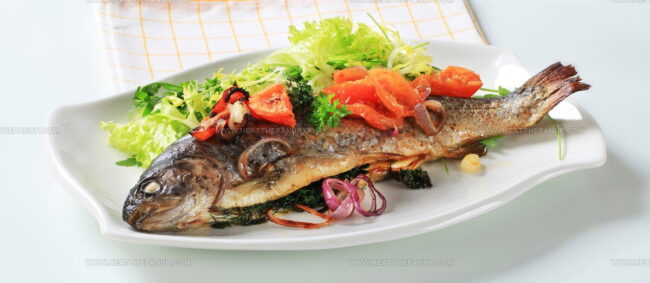
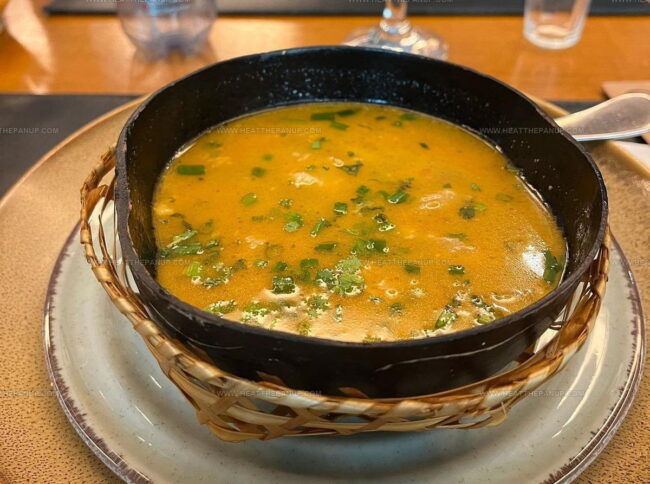
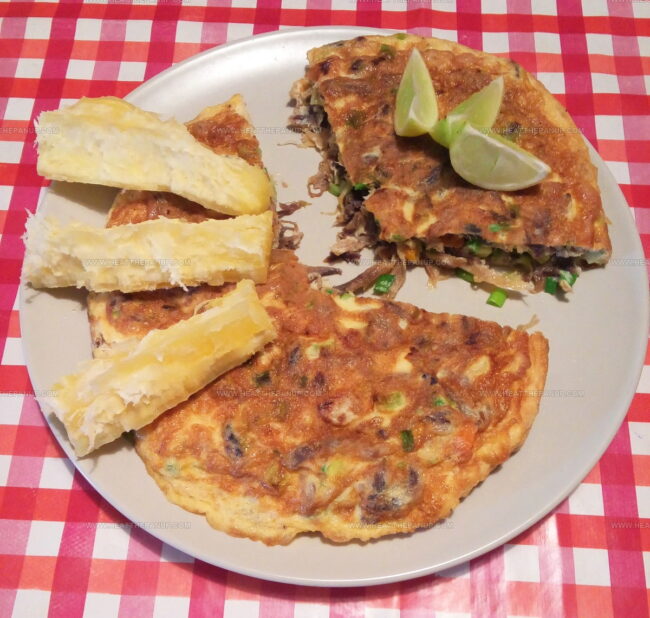
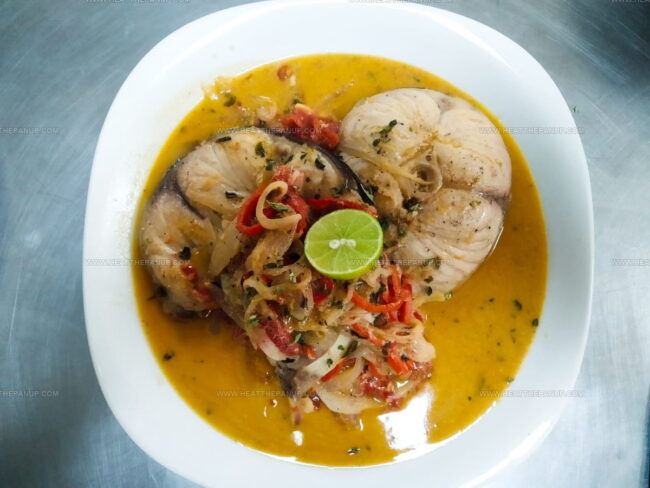
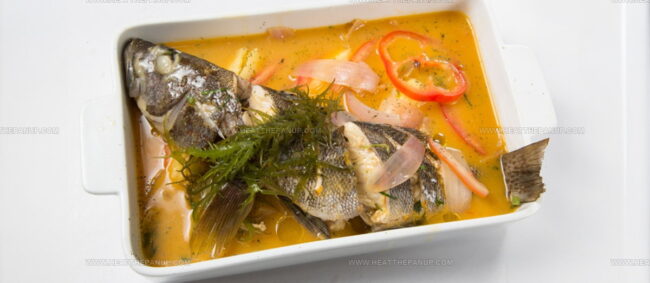
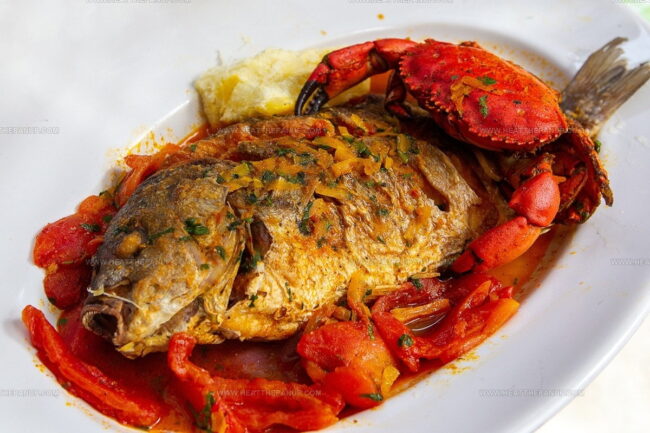
Angelina Wiles
Content Editor & Culinary Enthusiast
Expertise
Food Writing and Editing, Vegetarian and Vegan Cuisine, Baking and Pastry Arts, Sustainable Cooking Practices
Education
Portland Community College
Certificate in Culinary Arts
Focus: Emphasis on sustainable cooking practices, vegetarian cuisine, and food writing.
Oregon Culinary Institute
Diploma in Baking and Pastry Arts
Focus: Specialized training in artisanal baking, pastry techniques, and dessert presentation.
Angelina’s love for cooking started with handwritten family recipes and weekend trips to farmers’ markets around Portland. She followed her passion with a Certificate in Culinary Arts from Portland Community College, then perfected her sweet side with a Diploma in Baking and Pastry Arts at Oregon Culinary Institute.
Angelina believes recipes should feel like a conversation, not a science project. She’s all about helping readers trust themselves in the kitchen with simple steps, fresh ideas, and easy twists on classic meals.
When she’s not editing recipes, she’s baking bread, sipping coffee, or getting inspired by the changing seasons.